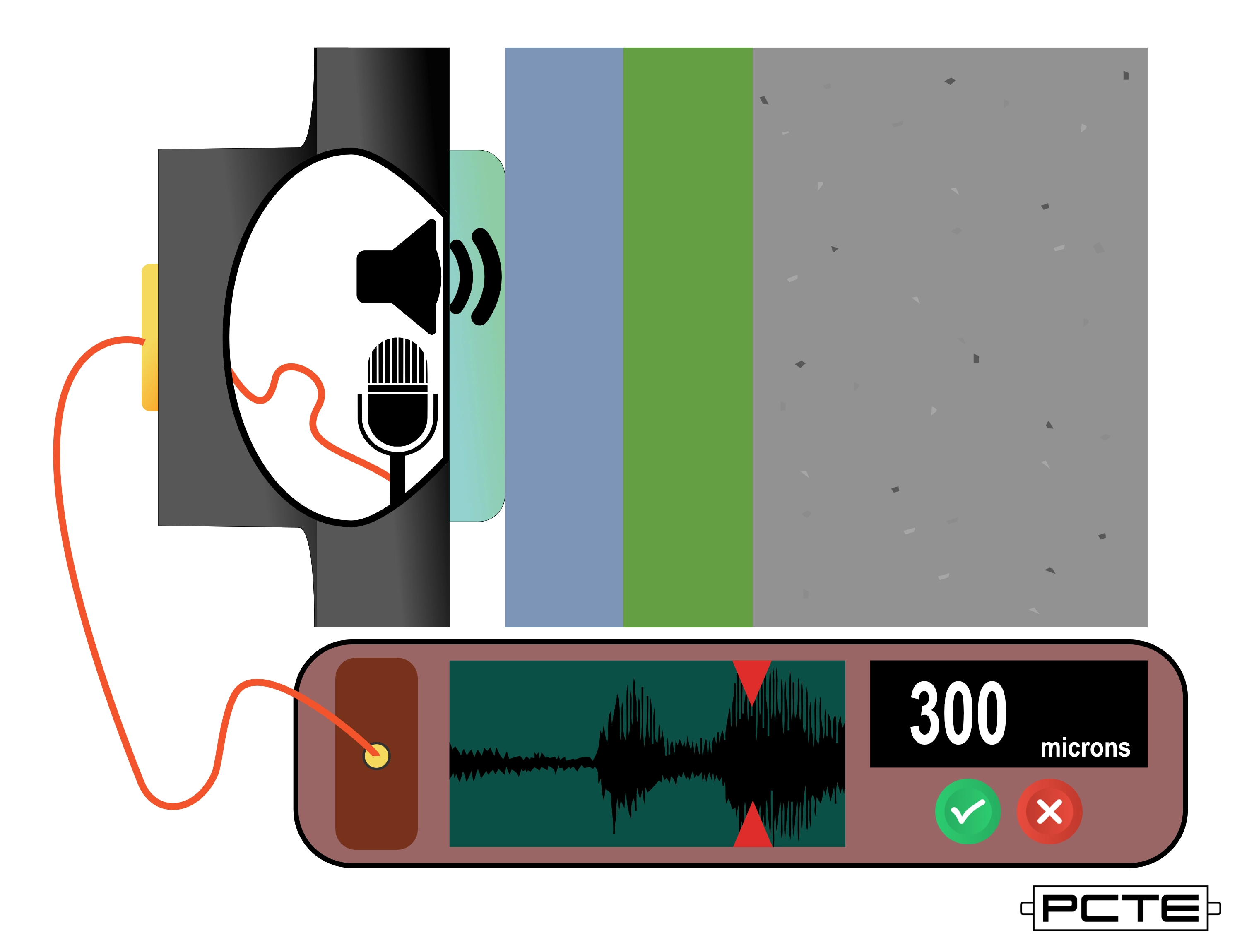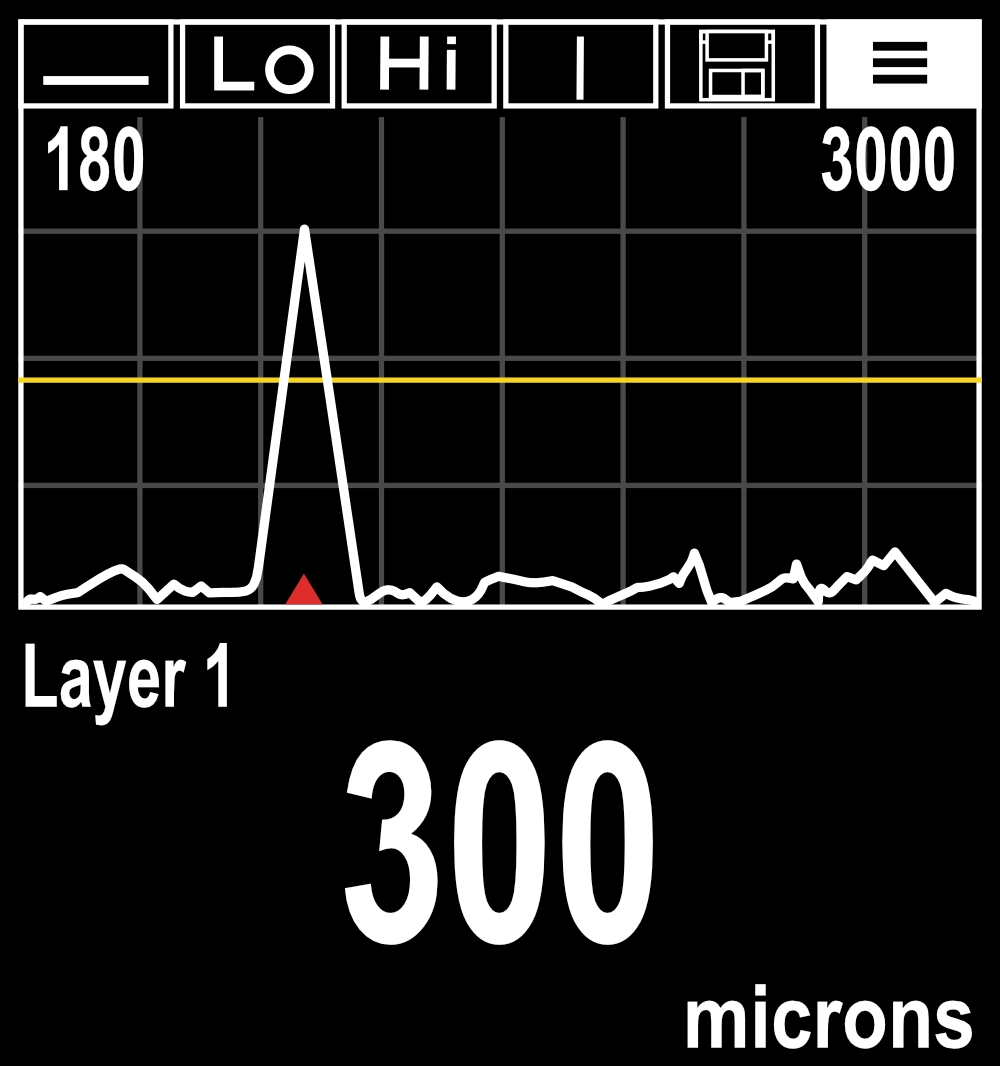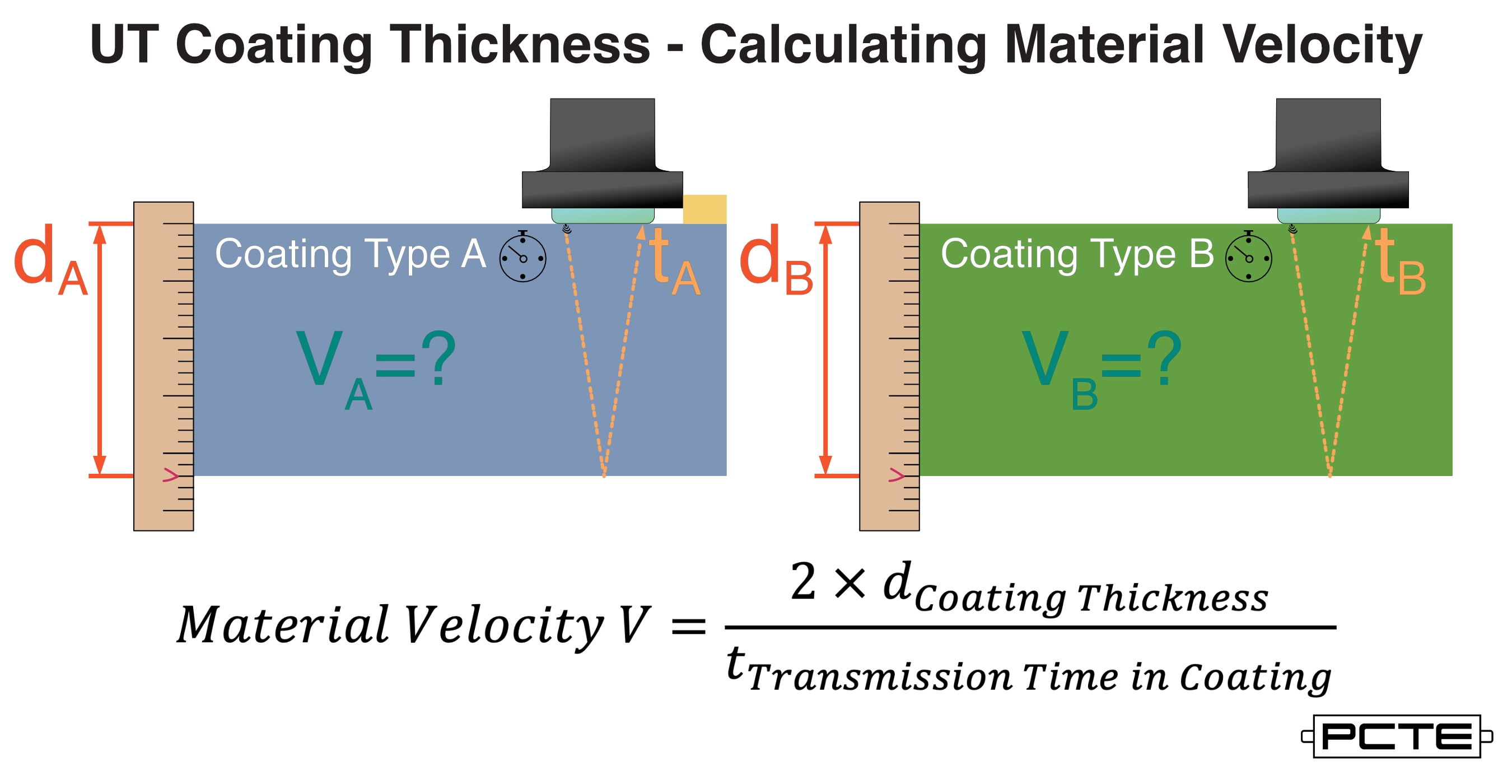An Ultrasonic Film Thickness Gauge like DeFelsko's Positector 200 probe emits a high frequency sound pulse that travels into the coating via a coupling gel and reflects from ANY surface that is different in density.
The readings of a ultrasonic film thickness gauge are obtained by measuring the time taken for the sound pulse to propagate from the probe to the coating/substrate interface and back.


The simplest mental model is that the probe is a transducer, so it acts as both a sound source similar to a speaker and as a microphone.
Coatings will carry this sound and any interface between layers of coating or the coating and the substrate will reflect the sound back to the probe.
The probe records as would a microphone, producing a sound record which is displayed to the user as a simplified graphic.
The thickness is marked on this graphic, under default settings the thickness is marked at the indicator for the loudest sound reflected from the coating/substrate system.
The measurement of coating thickness with an ultrasonic gauge is a three stage process.

The Thickness Calibration function of an ultrasonic gauge is used by the operator to conform the indicated thickness measurements to physically measured samples of specific materials, such as waterproofing membranes or paint types. It is critical to perform a thickness calibration so the Gauge measures at the limit of its accuracy and precision.
The gauge will record a Calibration Value tied to the material, this calibration value is based upon a calculation of the speed at which sound is transmitted through the coating material/s.
